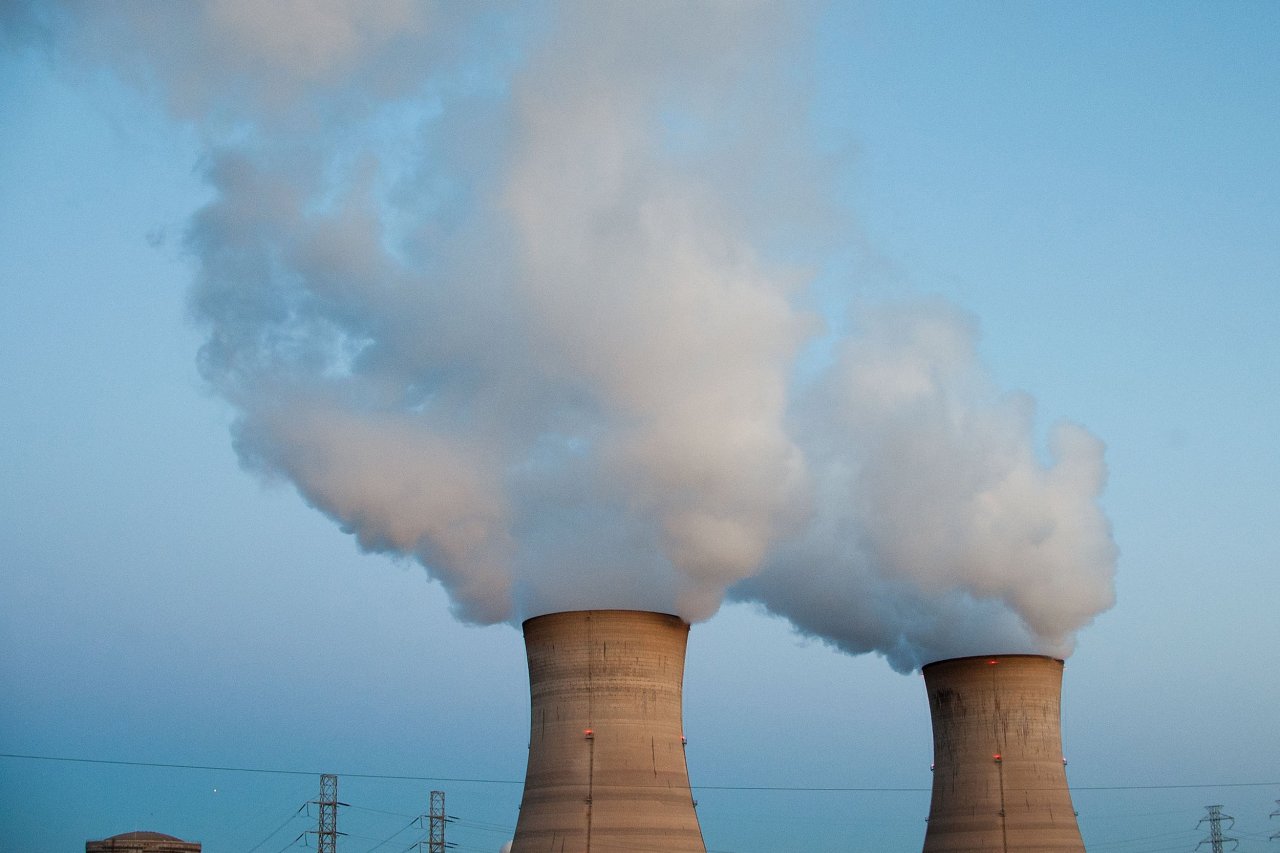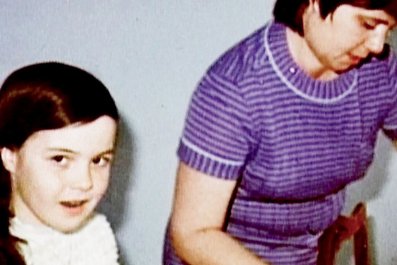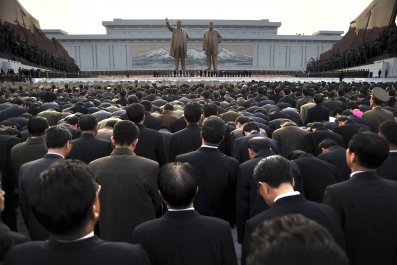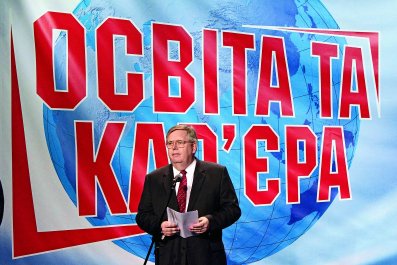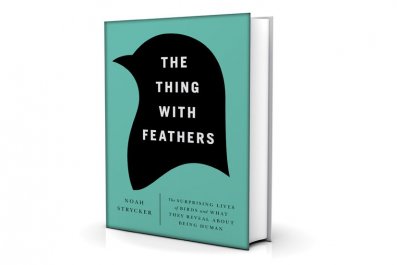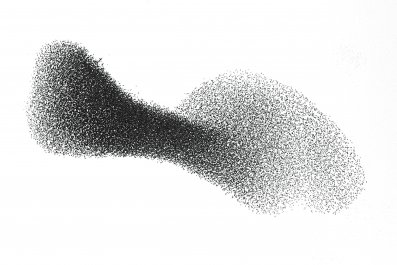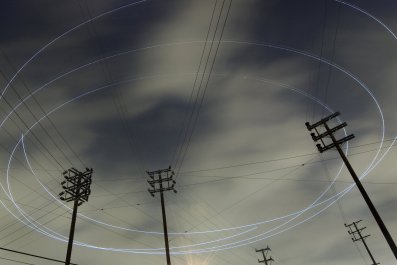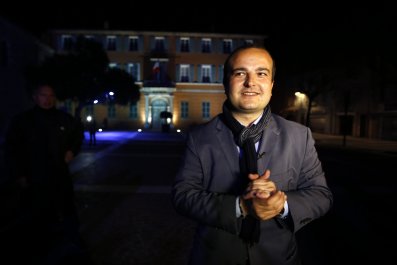Breakfast was beef jerky at a gas station in Socorro, New Mexico, washed down by 16 ounces of acrid Rockstar, followed by more beef jerky, followed by gum. Then, back on the road, on the third loop of a dangerously soporific NPR newscast: Obamacare…Crimea…Glassholes…
It was not yet dawn as I approached the White Sands Missile Range, the whole world composed of bands of blue and darker blue and black. A missile test was taking place later that morning, and the base was going to be closed to visitors, so if I wanted to see what I had come to see, I would have to see it soon.
Dawn is the right time to see the Trinity Site, where at 5:29:45 on the morning of July 16, 1945, the first detonation of a nuclear weapon in human history took place. The sun has not yet blanched the greens and reds of the high desert, now shedding the frigid darkness. There is not much to see here anymore, as this site was chosen by the directors of the Manhattan Project precisely because there was not much here in the first place. A black obelisk stands at the exact spot of the explosion, a 12-foot-tall perfect cone stark against the wavering, mountainous horizon. All that remains of the 100-foot tower that cradled "the Gadget" is a couple of concrete nubs. Beneath your feet, you might still spot greenish pebbles of trinitite, a glassy rock created as sand was sucked into a nuclear furnace of stellar proportions. Down the road is the McDonald Ranch House, which has stood for a century. A paper sign hangs from a string suspended from the ceiling: "Plutonium Assembly Room." Third-rate historical houses have more grandiose signage. Perhaps that's because we are still not sure if this is a place to celebrate or forget.
A Bare Nucleus of Legend
Nuclear bombs have leveled two cities—by my arithmetic, two too many. Nuclear energy, on the other hand, keeps electricity flowing through the veins of Paris and New York. This is a Janus-faced power that J. Robert Oppenheimer and his band of European exiles unleashed from the nucleus of the atom, the turgid nugget of protons and neutrons held together by the strong nuclear force. We had been toying with chemical reactions (that is, those involving only the electrons of atoms) at least since the first hominid caused the exothermic oxidation-reduction reaction known as fire; in the summer of 1945, the nucleus itself finally came undone.
Raised on Manhattan's Upper West Side and educated at Harvard, Oppenheimer, the Manhattan Project's chief scientist, had a propensity for the poetical turn of phrase (he was also adept at mixing martinis). It was a verse by the Metaphysical poet John Donne—"Batter my heart, three person'd God"—that led Oppenheimer to christen this swath of desert Trinity. After the resounding success of the test blast there, Oppenheimer famously resorted to Hindu scripture, saying that he had "become death, the destroyer of worlds." A more pedestrian assessment came from the physicist Kenneth T. Bainbridge, who told Oppenheimer after the blast that "now we are all sons of bitches."
And sons of bitches we remain. Vladimir Putin may not be stockpiling missiles in Cuba, but a Russian television presenter decided to double down on the Cold War nostalgia by suggesting, during the March hostilities over Crimea, that Russia was "the only country in the world capable of turning the USA into radioactive dust." Meanwhile, our long-standing love of triads was fulfilled in March 2011, when a tsunami heading toward the eastern coast of Japan gave the world a third major nuclear-energy catastrophe, Fukushima Daiichi, to complement Three Mile Island (1979) and Chernobyl (1986).
Several recent books have tried to take stock of our century-long affair with the nucleus, which began with Ernest Rutherford's investigations into the structure of the atom in the early 20th century. Any book written about choses nucléaires today will inevitably be judged against Richard Rhodes's The Making of the Atomic Bomb (1986), which encapsulated far more than just military history. In a 25th anniversary edition of the Pulitzer Prize–winning volume, Rhodes worried that the story of our atomic conquests was being worn down by time to "a bare nucleus of legend." This is a valid concern, but the current spate of books, including excellent graphic histories of both the Trinity site and Marie and Pierre Curie, suggests that for all the talk of wind farms and solar panels, of "stockpile stewardship" instead of nuclear winter, the immense achievement of splitting a nucleus remains as terrifying and enthralling to us as it was for the self-anointed destroyer of worlds in the first light of that July morning.
Caves Teeming With Radon
"We are now living in the twilight of the Atomic Age, the end of both nuclear arsenals and nuclear power, yet, simultaneously, radiation has become so ubiquitous in contemporary life that it is nearly invisible, at once everywhere and unnoticed," writes Craig Nelson in The Age of Radiance: The Epic Rise and Dramatic Fall of the Atomic Era, an enjoyable book that treads much the same ground traversed far more scrupulously by Rhodes. Nelson points out that the Manhattan Project, for all the havoc it caused in Japan, did wonders for American innovation: "By creating a safe haven for rejected genius, America transformed herself from an R&D Appalachia to the center of everything nuclear." In his estimation, though, the Atomic Age includes intentions mostly bellicose. Not enough is made here of the "Atoms for Peace" ethos of the postwar years, when Atomic Energy Commission head Lewis L. Strauss boasted of nuclear energy "too cheap to meter." Nelson writes well, but adds little.
Nor is the Manhattan Project quite as removed from the present as Nelson suggests. Back in 1939, the physicist Niels Bohr argued that it was impossible to build a nuclear arsenal "unless you turn the United States into one huge factory." That factory, though quiescent now, remains surprisingly intact. The Wall Street Journal, for example, recently pointed out that a sort of radioactive archipelago still exists across the land, a network of warehouses and factories marshaled for the sake of the Manhattan Project and the Cold War, only to be later turned to more benign purposes.
While some of the complexes, like the Hanford Nuclear Reservation in Washington state or Oak Ridge National Laboratory in Tennessee, have become tourist attractions, less significant nuclear nodes have had their history occluded, sometimes to the possible detriment of public health. "Residue, left by the routine processing as well as the occasional mishandling of nuclear material," the Journal reported, "exists in sites in almost three dozen states. Some remain in public parks, some near schools, and some in the walls, floors and ceilings of commercial buildings. Contamination has been detected on hiking trails in residential neighborhoods, in vacant city lots and in groundwater."
One of the sites used in the wartime nuclear effort is the Baker & Williams Warehouses in the Chelsea neighborhood of Manhattan. Today, it houses offices and an art gallery, in a once-grim section of town rejuvenated by the High Line park a half-block away. Next door, yoga and coffee. Seventy years ago, this was pretty much On the Waterfront. And, as it happens, Dr. Strangelove. According to A Guide to the Manhattan Project in Manhattan, these red-brick buildings "were used by the Manhattan Engineer District in the early 1940s for the short-term storage of uranium concentrates that had been shipped in secret to the nearby Hudson River docks."
No indication of this transuranic taint is apparent at the Baker & Williams Warehouses today, at least not to anyone without a dosimeter in tow. When I went there on a bright spring day, a fashionable middle-aged man was standing outside the building, in which he worked. He had not heard that the warehouse complex was involved in the Manhattan Project and once housed nuclear matériel.
"That's cool," he said when I told him. Then he took a satisfying drag of his cigarette.
That nonchalant dismissal does imply that Rhodes is right and that the Manhattan Project is taking on the benign glow of myth. That may not be a bad thing, either. The widespread efforts to keep "rogue" states like Iran and North Korea from developing nukes, and to keep long-standing belligerents like India and Pakistan from ever using them on each other, suggest that nobody is eager to repeat the twin detonations of August 1945.
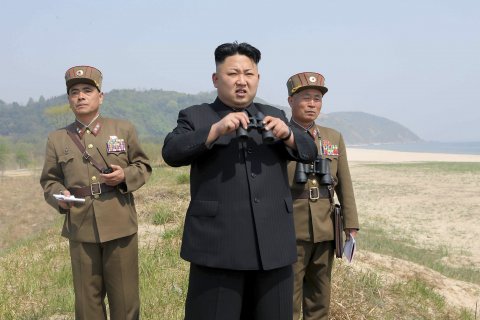
Nuclear power, on the other hand, remains a more vexing issue, the one that may deserve more attention today than nuclear weaponry. At the end of his book, Nelson arrives at more or less the same conclusion, writing, "After all the trouble nuclear has given us over the past seven decades, it's about time for the cheek to be turned and the benefits to be clearly manifest." Greens dismayed by coal and impatient with wind and solar have come to share this favorable opinion of nuclear energy. Many of these pro-nuclear liberals are featured in the recent documentary Pandora's Promise, which is slick but hopelessly dull in its argument for nuclear power.
Also bullish on nuclear energy is James Mahaffey, even if his new book has the harrowing title Atomic Accidents: A History of Nuclear Meltdowns and Disasters From the Ozark Mountains to Fukushima. It's weird and fun, a rather technical compendium of nuclear mishaps that appears to have been tweaked by Ziggy Stardust for maximum weirdness: clueless hunters wandering into caves teeming with radon-222, fervid dreams of nuclear jets, reactors bucking like steeds unused to human contact. Thirty-five years ago, The China Syndrome depicted work inside a nuclear power plant as pressing buttons, watching meters and, sometimes, shouting furiously at nervous underlings. Mahaffey, a nuclear engineer, keeps things appropriately dramatic, though his onslaught of scientific detail can intimidate anyone not already familiar with the shortcomings of graphite-moderated reactors or the difference between water and heavy water.
And while Mahaffey does cover the Big Three commercial nuclear accidents, Atomic Accidents is truly valuable for pulling many lesser debacles out of obscurity, from the aforementioned hunters who wandered into a radioactive cave in the Ozark Mountains in 1879 to the Kyshtym Disaster of September 29, 1957, an explosion of nuclear waste in central Russia that Mahaffey calls "possibly the worst, most senseless catastrophe in the history of nuclear power." Ever adept at propaganda, the Soviets deemed the surrounding area the East-Ural Nature Reserve.
Not that the United States's record has been impeccable. Most everyone knows Three Mile Island, but the outsized cultural import of that not-all-that-disastrous disaster obscures many smaller but still serious catastrophes in the American nuclear industry. In one of our earliest accidents, the SL-1 reactor in Idaho Falls was allowed to go "prompt critical" on the evening of January 3, 1961, fatally blasting three workers with "the explosive shock of two billion billion fissions" (no, that redundancy is not an editing error). The culpable party may have been senior reactor operator Jack Byrnes, of whom Mahaffey writes, "[He] was going through a marriage crisis, he wasn't making enough money, and he had problems being managed." This book is a testament to the astounding varieties of human error. Having finished it, I am surprised that anything at all remains of our misbegotten species.
Mahaffey, though, is a nuclear optimist, despite the century or so of horrors his book chronicles, from radium jaw (please don't Google-Image that) to the acute radiation sickness of the valiant and doomed firemen of Chernobyl. "The spectacular events that make a compelling narrative may be behind us by now," he writes, reasoning elsewhere that nuclear energy "may be one of the key things that will allow life on Earth to keep progressing," presumably by curbing our carbon dioxide emissions. Especially promising to many nuclear proponents is fusion, which brings nuclei together instead of splitting them apart (i.e., fission).
But fusion is a dream, and fission is what we have, sometimes conducted in creaking old plants like Indian Point, just 38 miles north of New York City and sitting astride a fault line. If there were a Fukushima-style explosion at Indian Point, an estimated 20 million people would have to evacuate the Greater New York area. Even the remote possibility of that narrative is too compelling for some.
"Unbelievably Phobic"
The collective confusion over what, exactly, to make of our flirtation with the nucleus is on full display at the National Museum of Nuclear Science & History in Albuquerque, N.M., just a couple of hours south of the Los Alamos National Laboratory, where nukes were invented. Tucked next to Kirtland Air Force Base and Sandia National Laboratories, the museum is a miscellany of military history, nuclear science, jingoism and nuclear-energy self-promotion. There are many, many warheads, a Packard sedan used to transport Manhattan Project scientists and a jug of "radium water," which promised to cure eczema and gastric troubles. Behind the museum is a dusty parking lot of warplanes and long-range missiles, suggesting an airfield in pre-battle repose. Near an exhibit about Hiroshima is a journal where visitors can leave their reflections. One of these says, "Iris OMG I am going to make the next bom[b]!" I fear this person may have missed the point. Then again, maybe we all have.
"The moral complexity has disappeared" from our understanding of nuclear weapons, Richard Rhodes lamented when I reached him by phone at his home in Northern California. He was at least as eager to talk about the naturalist John James Audubon, of whom he has written a biography, as he was of nuclear weapons. I can't blame him. Of the latter, he says we are "deliberately ignoring our responsibilities" by keeping around some 7,700 nuclear warheads, tempting saboteurs, thieves and fate.
Rhodes is more sanguine about nuclear energy, recalling how he started out as a "knee-jerk anti-nuclear journalist" back when he was researching The Making of the Atom Bomb in the late 1970s. He says that while we can continue to "mess around" with "boutique" energy sources like wind and solar, nuclear energy provides the surest cure to our carbon jones. Rhodes laments that nuclear weaponry has made Americans "unbelievably phobic about radiation," so that the notion of a peaceful atom can no longer be countenanced without cynicism. Both Mahaffey and Nelson are of the same mind about nuclear power, with the latter pleading with his readers to "not turn away from it in fear, superstition, and ignorance."
But superstition and ignorance are traits deeply cherished in America. Scientists and historians are, I suspect, in a lonely camp of rational conviction; the average American may never be weaned off the unfair image of a nuclear plant owned by the unfeeling, rapacious Montgomery Burns and run by an army of blithe incompetents à la Homer Simpson. Burning fossil fuels somehow seems natural, elemental. Splitting a nucleus, conversely, simply feels like an act of phenomenal hubris, and no amount of persuasive rhetoric will change that. The most awesome force unleashed by the nucleus thus far has been what the novelist Don DeLillo once called "the theology of fear."
Of the many things written about nuclear science, then, the one that echoes loudest and longest may be a single sentence in Mahaffey's book. It consists of one terrifying word: "Bang."



